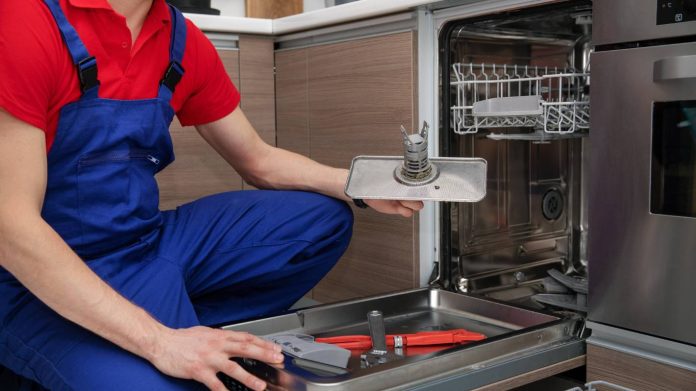123rf
Many New Zealanders are choosing to repair broken appliances at home, rather than call in the experts or buy new.
When the going gets tough, New Zealanders get resourceful.
As the cost of living climbs, many consumers are choosing to repair broken appliances at home, rather than call in the experts or buy new.
Among them is Gisborne woman Sandra Troy, whose Nespresso machine was about 10 years old when it started having problems.
The first sign of trouble was water leaking from the capsule coffee maker’s tank, which turned out to be cracked.
But rather than bin the machine and buy a new one, Troy turned to the internet, where a quick google revealed a replacement tank would cost about $25.
VANESSA LAURIESTUFF
Is it cheaper to make a coffee at home?
More recently the machine began delivering water and coffee “everywhere except into my cup,” she said.
“It was running inside the machine and out on to the bench, everywhere except where it should have been.
“It turned out to be a specific piece, part of the mechanism which pierces the capsules. There are tiny little plastic lugs and when those broke, the machine was broken.”
Again, Google and YouTube came to her rescue, with videos showing how to remove two screws and take the machine apart.
A new part arrived within two days of ordering, at a cost of $21 including shipping, and Troy quickly had her machine back up and running.
“I’ve spent less than $50 completely fixing my machine, which is great when you think that a reasonable quality new machine still costs $300-$400,” she said.
Troy is far from alone in her DIY endeavours.
After Consumer NZ last week revealed the limited life expectancy of some modern appliances, many people came forward with their tales of at-home repairs.
“My cordless Dyson vacuum cleaner stopped, and I used YouTube to disassemble and thoroughly clean it. I ordered a new battery, installed it and reassembled it perfectly,” one person said.
Supplied
Sandra Troy says she spent less than $50 repairing her Nespresso machine, but a new one would have cost her hundreds.
Another reported decoding the flashing lights on their washing machine to diagnose the problem.
“I sent off for the part, which fitted under the drum. Having not much to lose and thanks to YouTube I managed to remove the faulty part and replace it,” they said.
“My machine works fine after having it for 17 years.”
Consumer NZ said New Zealanders threw out about 97,000 tonnes of electrical waste every year – about 20 kilograms per person and one of the highest per capita amounts in the OECD.
Easy-to-repair products typically went to landfill, because there were few local repairers and manufacturers had tied up the repair game to restrict competition, Consumer NZ head of testing Paul Smith said.
“This has made it too expensive and time-consuming for shoppers to repair faulty devices. We own the products, so it should be up to us whether we repair, and where the repairs are done too.
“These decisions should not be taken out of our hands.”
Some manufacturers were also restricting spare parts and instruction manuals, claiming the practice reduced ‘poor-quality’ repairs, he said.
Most 18- to 26-year-olds can’t answer these simple consumer law questions. (Video first published on September 25, 2021)
And while consumers should be careful about getting out of their depth with electrical components for safety’s sake, Smith said they were within their rights to attempt their own repairs.
“We know some manufacturers will void a warranty altogether if a consumer decides to repair the device themselves, or if they use an unaccredited repairer,” he said.
“These warranty conditions don’t restrict your rights under consumer law if the repairer hasn’t damaged the device. The Consumer Guarantees Act doesn’t require repairs to be done by authorised repairers.”
Consumer NZ has called for the introduction of a product repairability label, similar to the energy star label already in use, so shoppers have accurate and unbiased repairability information before they make a purchase.
www.stuff.co.nz
https://www.stuff.co.nz/business/132914362/cost-of-living-crisis-sparks-wave-of-diy-appliance-repairs















